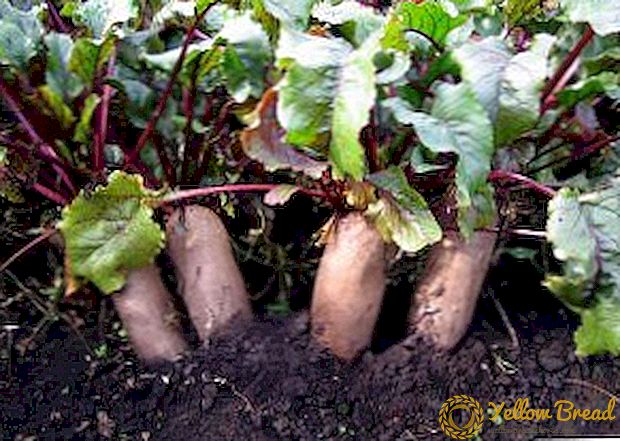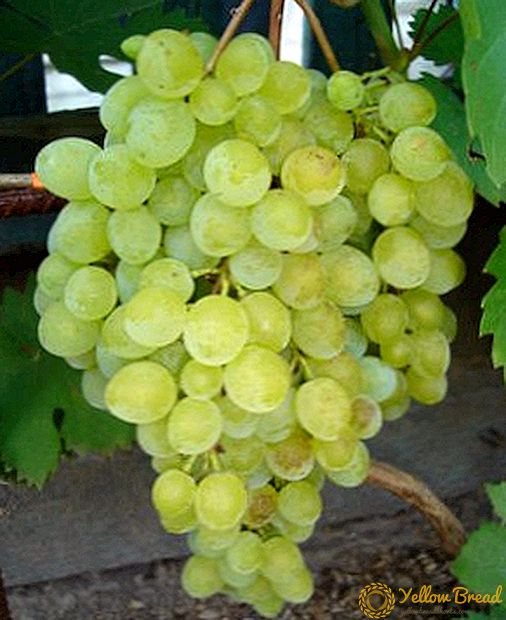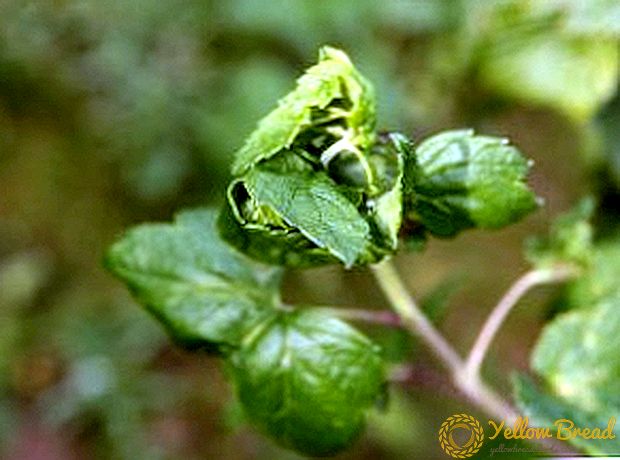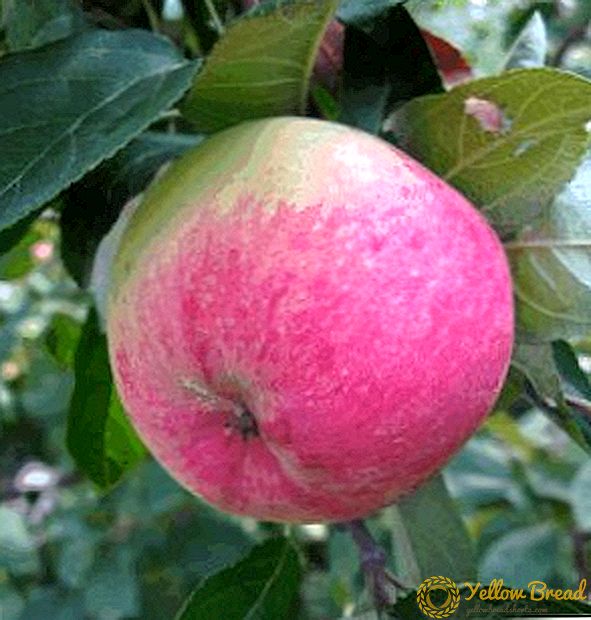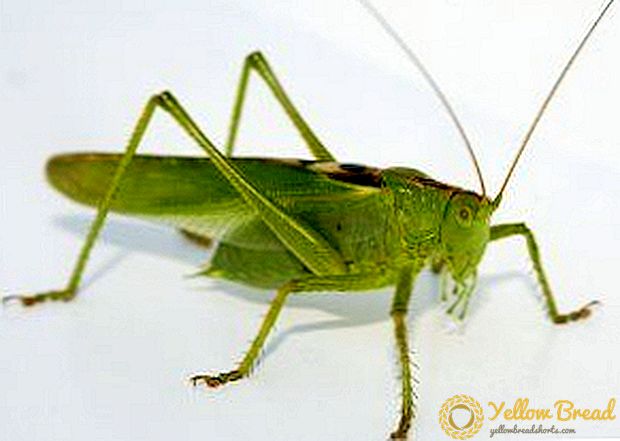
Among the two million species of insects that inhabit the Earth, there are those that are capable of becoming a true natural disaster. One of them: the Asian locust - refers to the order Orthoptera.
Grasshoppers, briskly galloping through meadow grasses, are related to locusts, however, unlike her, they never multiply in large quantities and do not become a serious threat to all the surrounding greenery.
Development features
Insects belonging to the species Asian migratory locust (Locusta migratoria) live in Europe and Asia Minor, in North China and North Africa, in Korea. On the territory of Russia and the CIS countries, these orthopterans fly to the south of the European part, the Caucasus, Central Asia, Kazakhstan and the southern regions of Western Siberia.
In the temperate climate zone insectleaves hibernating eggs in loose, sandy, fairly moist soil. Ideal nurseries for future generations of these insects are river floodplains and the banks of water bodies covered with reed and sedge thickets.
Accordingly, in Russia and neighboring countries, especially large locust breeding centers are located in the deltas of the rivers flowing into the Black, Caspian,Aral Sea and Lake Balkhash, as well as in the Danube Delta.
In the spring, if the clutch is not dried out and not flooded by a prolonged flood, miniature locust larvae, which have the shape and structure similar to that of an adult insect, leave the underground egg cubes with eggs, bypassing the pupal stage. The young grow rapidly and grow, passing a few molts.
In the "well-fed" years when these orthopterans can find abundant plant foods rich in protein, they are from spring to late autumn. live in a single form "fillies" up to 4-5 cm long. This "peaceful" form is colored green or yellowish-green, inactive, has a pronounced "hump" on its back and feeds on wild cereals - mainly cane and wheat grass.
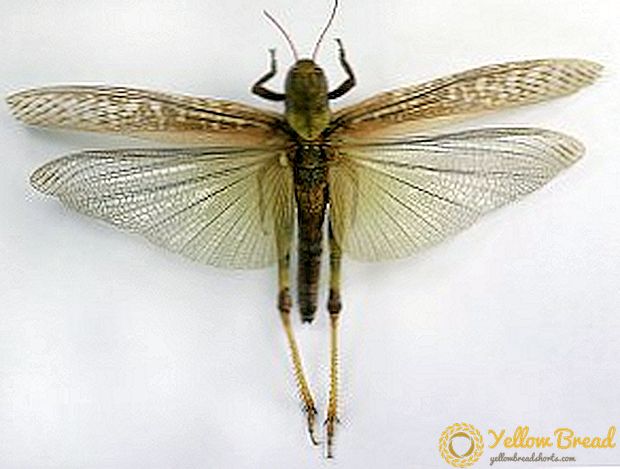 However, harmless "fillies" can acquire a very different look, forming gregarious formwhich is so different from the single, that for a long time it was attributed to a special, separate species.
However, harmless "fillies" can acquire a very different look, forming gregarious formwhich is so different from the single, that for a long time it was attributed to a special, separate species.
Periodically, at intervals of about 10-12 years, in especially dry and hot years, the Asian migratory locust breeds in extreme quantities. Then the larvae, which have not yet grown wings, increase in size to 6.5 cm.
They straighten a slouching back, instead of a cheerful green color, they are covered with a formidable rusty-mourning camouflage and begin to march in order, gathering in dense columns — swarms that destroy everything growing, juicy and green on their way.
After the fourth and fifth molt, finding long straight wings and the ability to fly up to 12 hours without a break, they turn into a real biblical horror, the eighth Egyptian execution, - a cloud of insects, moving independently up to 300 km, and with a tailwind overcome thousands of kilometers distance.
A horde of locusts of billions of individuals in flight produces a thundering sound, composed of a cod of a myriad of fine mesh wings, and during planting breaks off the branches of trees with its weight.
Both walking kuligi, and flying flocks eat cereals - wheat and rye, barley, oats, corn, rice, sorghum and millet. They empty fields of alfalfa and clover, hayfields and pastures, deprive foliage of forest trees, fruit seedlings and berry bushes.
Destroy the growth of legumes and melons, foliage of potatoes and root crops, planting hops, tobacco, grapes, flax and cotton, oilseeds. The massive invasion of the Asian migratory locust is a true disaster for any agricultural enterprise.
A photo
Forms of locust development in pictures:
Single peaceful form
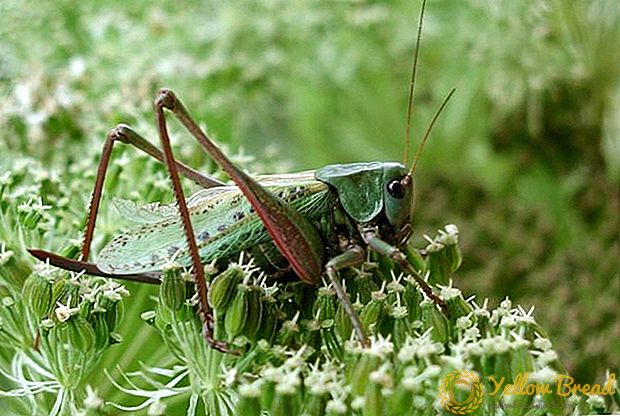
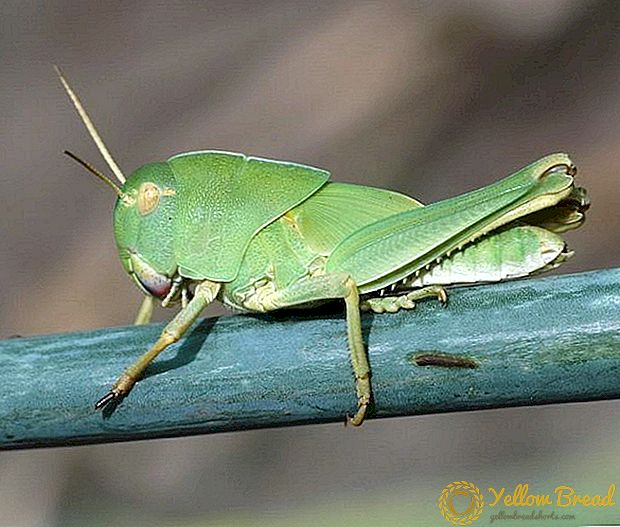
Herd form
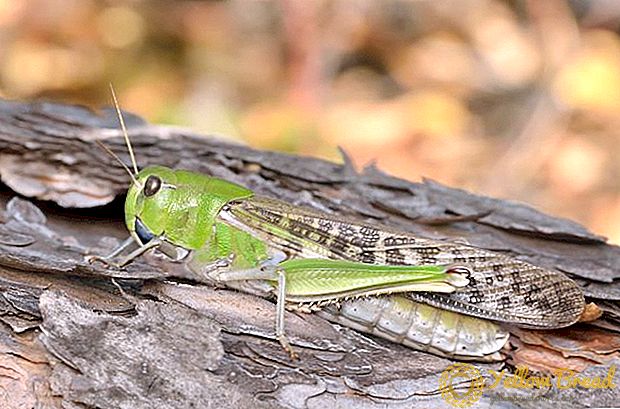
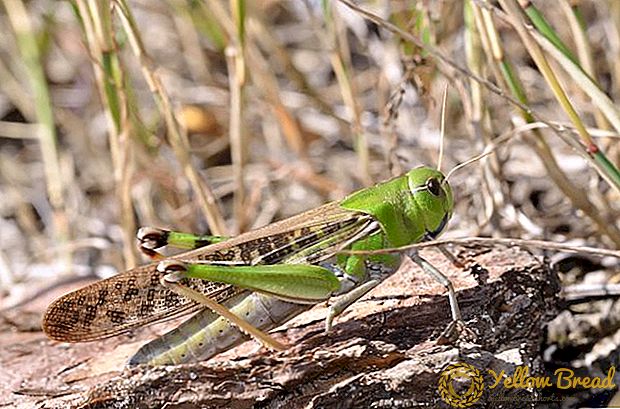
Juvenile Asiatic locust without wings
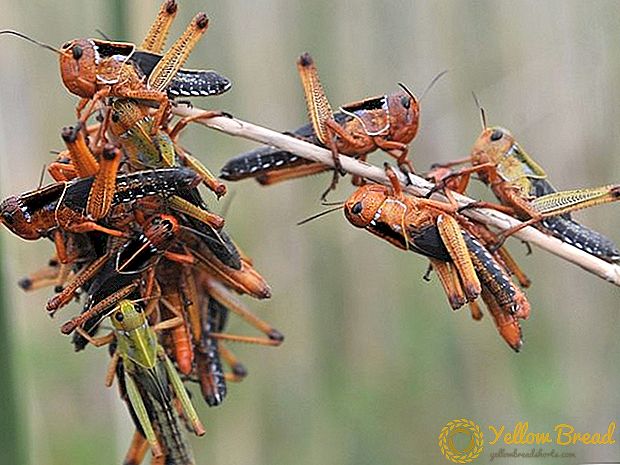
Countermeasures
To prevent agricultural disasters, in breeding areas monitor the number of insects at different stages of development of the migratory locust.
Such accounting allows you to predict the appearance of the gregarious form and use insecticides in the phase of raising the number - including, to carry out barrier treatment of breeding grounds.
Agrotechnical prevention of the growth of the Asian locust number is:
- Drainage of rivers and lakes using them for agricultural planting.
- Pasture Improvement massive seeding of fodder grasses.The soil, thickly braided with roots, becomes unsuitable for laying eggs.
- Deep tillage, populated with locusts, with a coup of the earth layer and harrowing.
- Spring disc loosening on roadsides and slopes of irrigation canals.
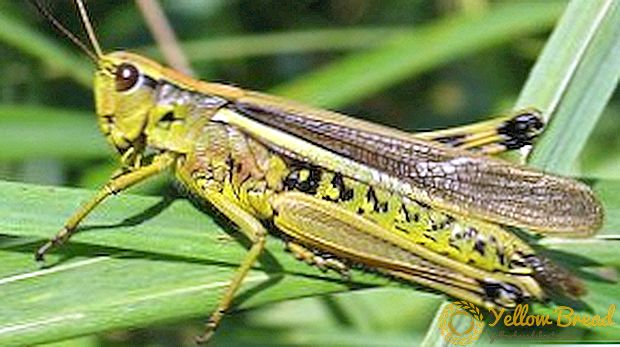 Asian migratory locust (locust family name), type of development - indirect. During the period of mass reproduction, this pest is a real threat to all crops.
Asian migratory locust (locust family name), type of development - indirect. During the period of mass reproduction, this pest is a real threat to all crops.
To prevent the rise in the number of these insects can agrotechnical and biological prevention, as well as the timely processing of breeding centers with insecticides.


